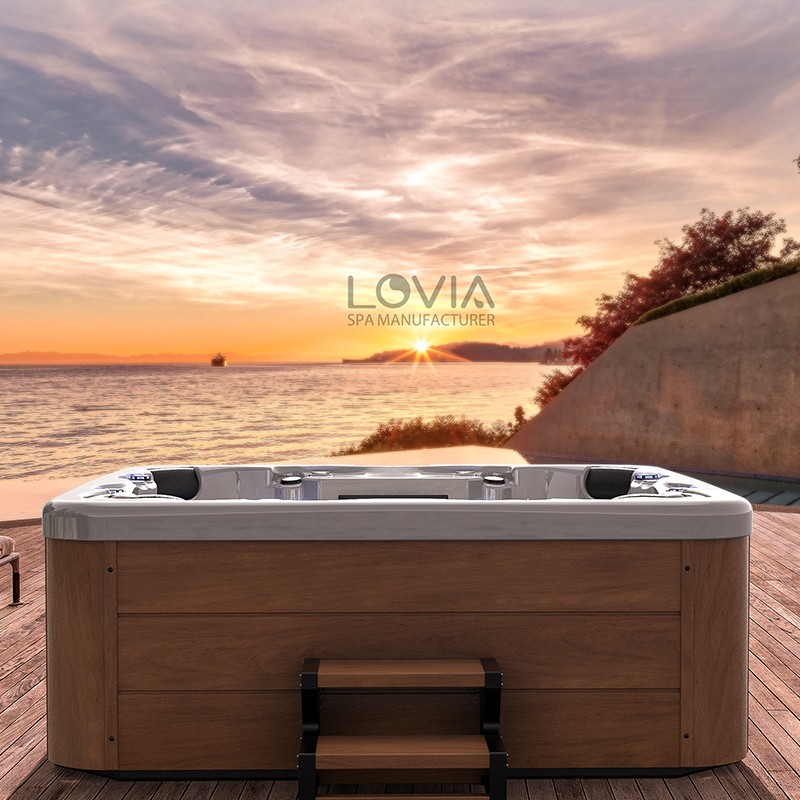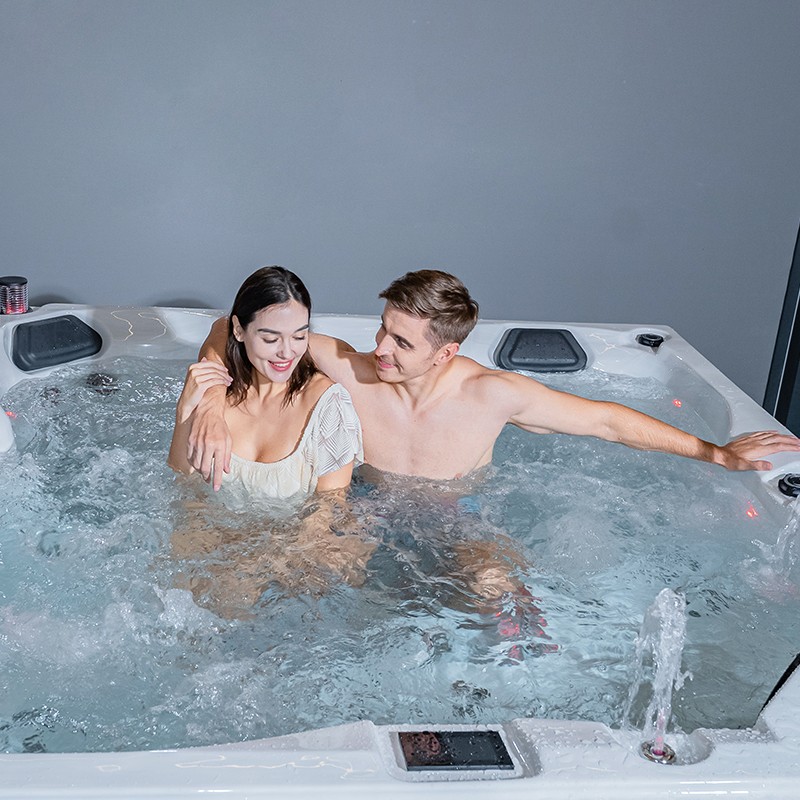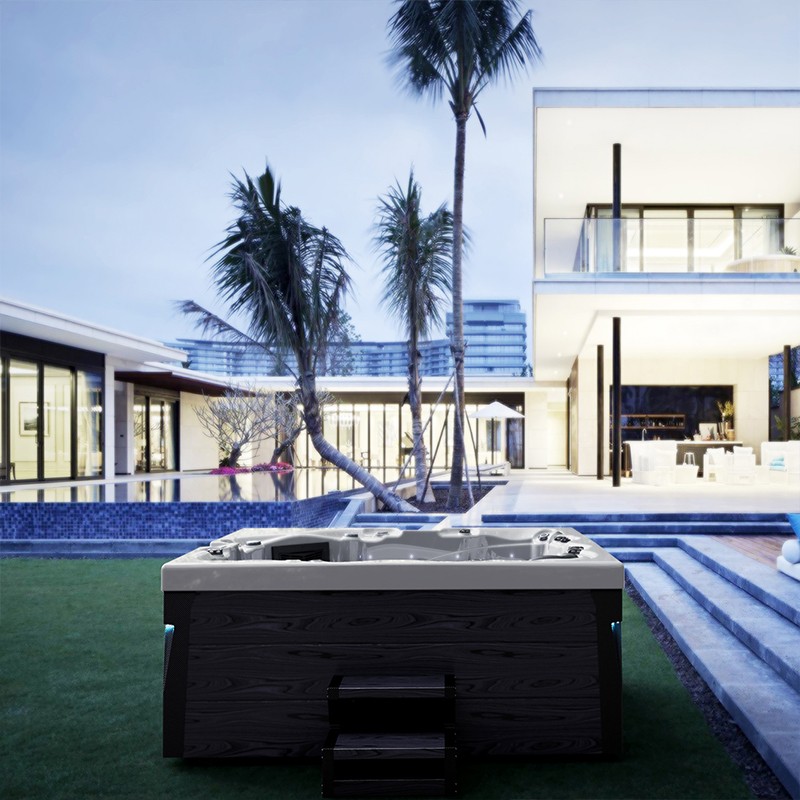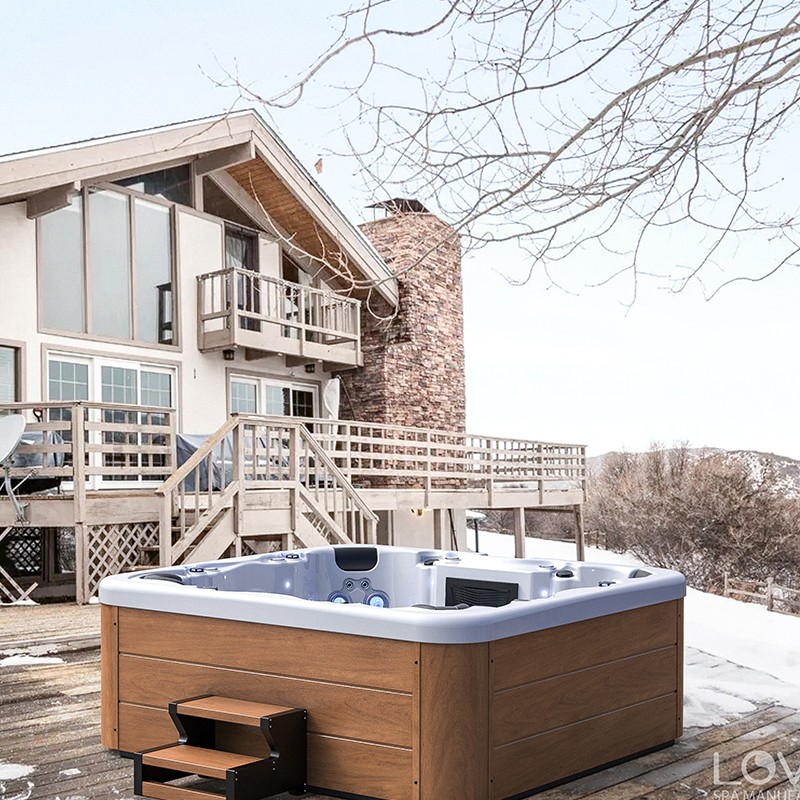
Can lowering the temperature of an outdoor spa hot tub save money?
2025-10-14 15:35Outdoor spa hot tubs are increasingly popular among home leisure facilities for their multiple benefits: soothing the body, relaxing the nerves, and improving quality of life. However, this comfort comes with high operating and maintenance costs. Maintaining water temperature is a key component of an outdoor spa hot tub's operating costs.
As a result, "Can lowering the temperature of an outdoor spa hot tub save money?" is a question that many users and potential buyers are concerned about.
This article will comprehensively address this question from multiple perspectives, including energy consumption, thermodynamic principles, the impact of tub structure, user habits, and climatic conditions. This will help users make the most cost-effective operational decisions while ensuring comfort.

Understanding the Logic of Outdoor Spa Hot Tub Temperature Settings
To determine whether lowering the temperature can save money, it's first necessary to understand the basic logic and operating mechanism of outdoor spa hot tub temperature settings.
Generally speaking, the temperature control range for most outdoor spa hot tubs is:
· Minimum temperature: approximately 26°C (approximately 78.8°F);
· Common operating temperature: 37°C to 40°C (98.6°F to 104°F);
· Upper safety limit: 41°C (approximately 105.8°F).
Most users accordantly set their outdoor spa hot tubs to between 38°C and 40°C to ensure optimal relaxation and massage.
Spa hot tubs use heaters to continuously maintain the water temperature at the user's set value. When the ambient temperature drops or the lid is not securely closed, the water temperature naturally drops, triggering the heater to repeatedly reheat. This process is a major source of energy consumption.

The Relationship between Energy Consumption and Temperature - A Thermodynamic Perspective
1. Heat loss is proportional to the temperature difference
In thermodynamics, there is a key principle: heat energy flows from a high-temperature object to a low-temperature object, and the rate of heat loss is proportional to the temperature difference. This means that the higher the water temperature in an outdoor spa hot tub, the greater the difference from the ambient temperature, the faster the heat loss, and the higher the energy consumption.
For example:
· If the outdoor temperature is 10°C and the tub water temperature is set to 40°C, the temperature difference is 30°C;
· If the water temperature is adjusted to 37°C, the temperature difference becomes 27°C;
· Although the difference is only 3°C, the rate of heat loss can be reduced by approximately 10%, significantly reducing long-term cumulative energy consumption.
2. Reduce the frequency of heater operation
The higher the temperature setting, the more often the water temperature drops below the "heating threshold," causing the device to activate more frequently, consuming more energy and increasing wear and tear.
Lowering the temperature significantly reduces the frequency of heater activation, thereby reducing electricity bills and equipment maintenance costs.
Specific Cost Savings Evaluation and Calculation Model
We can use a simplified model to estimate the energy savings from lowering the temperature of an outdoor spa hot tub:
Simulation Conditions:
· Tub volume: 1500 liters;
· Set temperature difference: 3°C lower (e.g., from 40°C to 37°C);
· Daily heating energy consumption: approximately 9-12 kWh;
· Electricity cost: $0.15/kWh;
· Frequency of use: 4 hours per day, 300 days per year.
Estimated Energy Savings:
· Lowering the temperature by 3°C reduces heating energy loss by approximately 10%-15%;
· Daily electricity savings: approximately 1 kWh;
· Annual electricity savings: approximately 300 kWh;
· Annual electricity cost savings: approximately $45-$60.
This is a conservative estimate. For tubs in colder regions, with frequent users, or with poorly insulated equipment, this value may be higher, resulting in even more significant cost savings.

Other Key Factors Affecting Energy Savings
1. Bathtub Insulation
The thickness and quality of the insulation material determine the thermal efficiency of an outdoor spa hot tub. If the insulation is poor, even if the temperature is lowered, heat loss will continue rapidly, limiting energy savings.
· It is recommended to choose a bathtub wrapped in high-density polyurethane foam.
· A closed, insulated shell significantly reduces heat conduction.
2. Lid Seal
The majority of heat is lost through the water surface. If the lid is not tight or the seal is deteriorating, the heater will need to be activated frequently to maintain the temperature, resulting in increased energy consumption.
Lowering the temperature can only mitigate, but not fundamentally eliminate, the problem of heat loss. Therefore:
· Use a high-quality insulated lid;
· Regularly inspect and replace the seal;
· Always keep the lid closed when not in use.
3. Environmental and Climate Conditions
· Winter or cold regions: Energy savings are most significant;
· Summer or warm regions: Energy savings are relatively small.
For example, in an environment with a temperature of -5°C, the difference in heat loss between setting the water temperature to 40°C and 37°C is far greater than the same difference in heat loss at 20°C.
Balancing Comfort and Energy Savings
While lowering the temperature of an outdoor spa hot tub can indeed save on electricity, the user experience must also be considered:
1. Temperatures below 37°C may feel "too cool."
For users with muscle soreness or in cold weather, 37°C may not provide sufficient relaxation and may even cause a brief "freezing," negatively impacting the user experience.
2. Heat loss is accelerated when multiple users are using the tub
When people enter the hot water, they remove some heat energy. If the initial temperature is too low, the rapid drop in water temperature will further affect comfort and force the tub to reheat, ultimately reducing energy savings.
Recommendations:
· For quick soaks, set the tub to 36°C-37°C.
· For longer soaks or massages, maintaining 38°C-39°C is more appropriate.
· When not in use, lower the tub to a sleep temperature (e.g., below 30°C) for maximum energy savings.

How to scientifically lower the temperature for optimal energy savings?
To achieve the optimal balance between energy savings and comfort, the following specific operational strategies can be adopted:
1. Differentiated Temperature Strategy
· Daytime or high-temperature use: Lower the temperature to 36°C-37°C;
· Nighttime or cold weather use: Maintain above 38°C;
· Long-term non-use (more than 3 days): Lower the water temperature to below 30°C or enter "Energy Saving Mode."
2. Configuring a Smart Temperature Control System
Choose an outdoor spa hot tub with smart temperature control, which automatically adjusts the water temperature based on ambient temperature, usage habits, and time of day, significantly reducing inefficient heating.
3. Regular Maintenance and Inspection
· Clean scale and filters;
· Check heating elements for efficiency;
· Replace aging insulation and sealing materials.
A well-maintained spa hot tub can improve energy efficiency by 15%-20%, which in practice is far more energy-efficient than simply adjusting the temperature.
Economic Impacts and Supplemental Benefits Beyond Energy Savings
Lowering the temperature of an outdoor spa hot tub not only reduces electricity bills but also offers a series of indirect economic benefits:
1. Extended Equipment Life
Frequent heater activation accelerates component aging. Lowering the temperature reduces heating frequency, extending the life of the heating element and pump.
2. Reduced Maintenance Frequency
High temperatures can encourage bacterial and algae growth (especially when disinfectant is insufficient). Lowering the temperature helps maintain consistent water quality, reducing cleaning frequency and costs.
3. Improved Overall Energy Efficiency
If your home already has a solar or geothermal system, lower operating temperatures can more easily integrate with these systems, reducing reliance on additional electricity.
Does Lowering the Temperature of an Outdoor Spa Hot Tub Save Money?
Based on the above analysis, we can draw a clear conclusion:
✅ Yes, lowering the temperature of an outdoor spa hot tub can save money. These savings are reflected not only in your electricity bill but also in equipment longevity, water quality maintenance, and energy efficiency.
However, it's important to note:
· Temperature reduction must be tailored to usage habits and climatic conditions;
· Energy savings depend on the bathtub's insulation performance, heating system quality, and routine maintenance;
· The ideal energy-saving solution combines intelligent temperature control, timed temperature adjustment, appropriate usage frequency, and optimized insulation structure.
For users seeking both comfort and energy savings, scientifically lowering the temperature is a low-cost, high-return energy-saving strategy worth incorporating into daily usage management.
What makes Lovia Spa different from other spa brands?
Lovia Spa, produced by Guangzhou HuanTong Industrial, has earned a reputation for high-quality designs, premium acrylic shells, and reliable pump systems. Unlike some cheaper or lower-priced competitors, we combine international certificates such as CE, ETL, and SAA with strict ISO9001 systems. This ensures customers are purchasing a durable and safe spa.As a supplier and manufacturer, we provide wholesale opportunities, seasonal promotions, and discounted prices to purchasing managers seeking consistent quality from a reliable factory.
